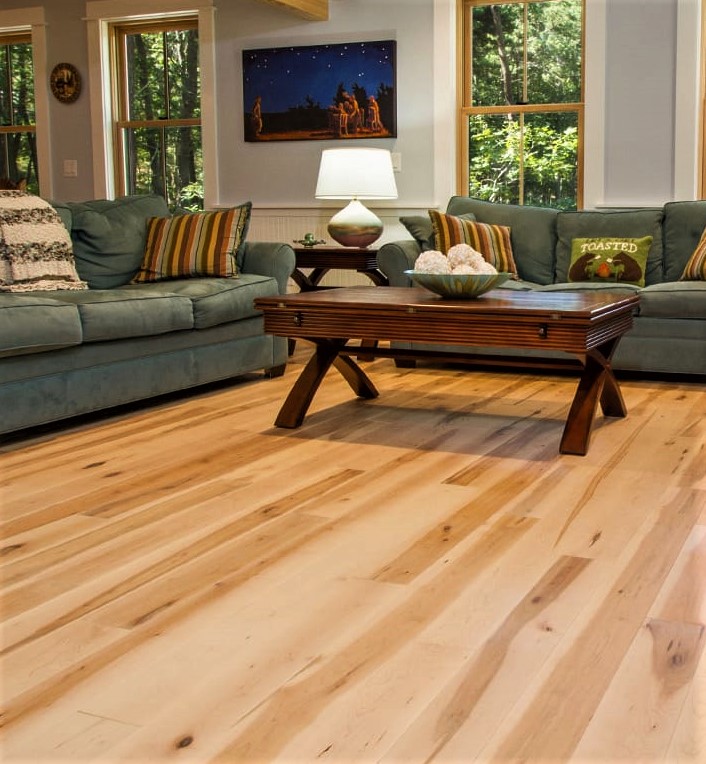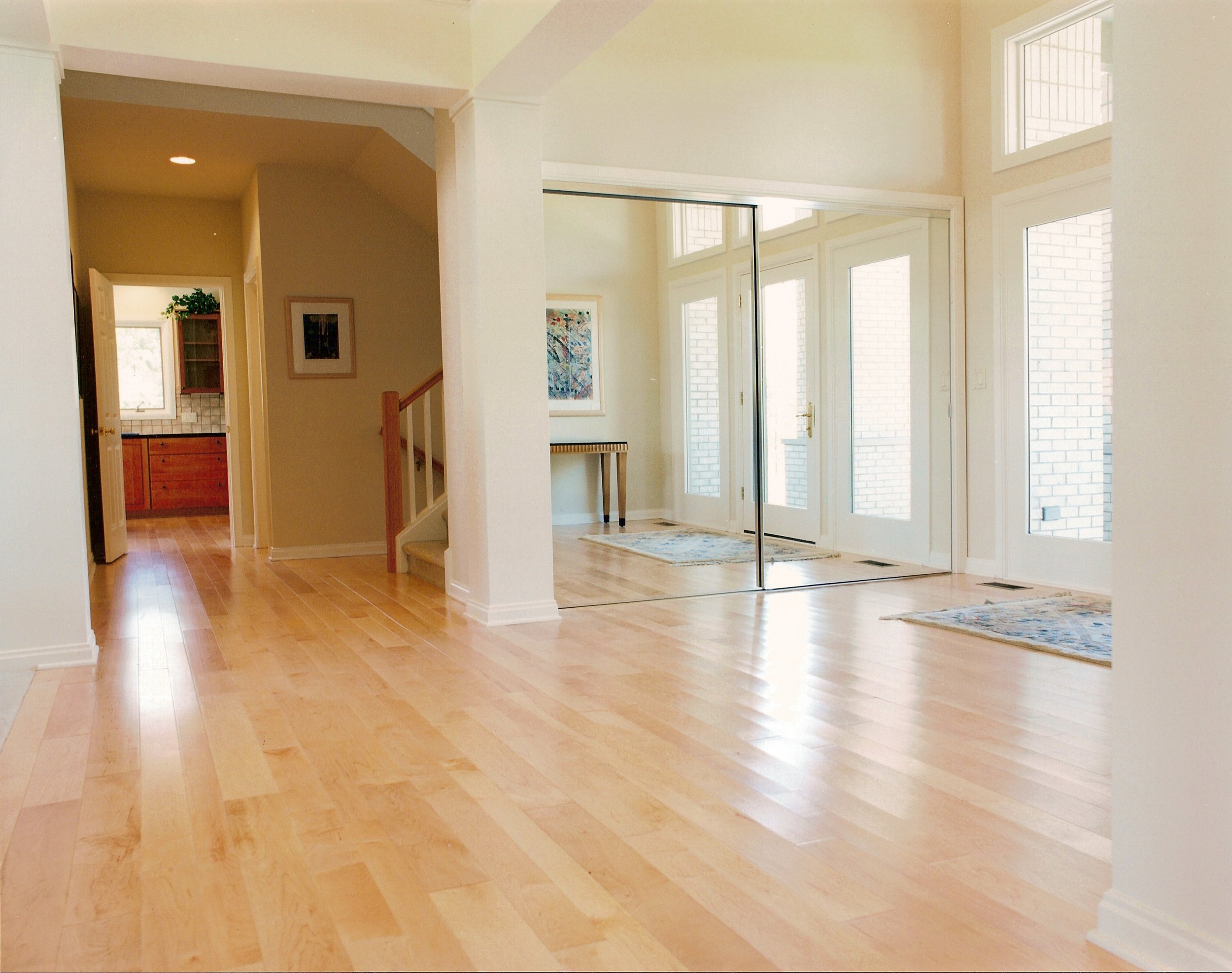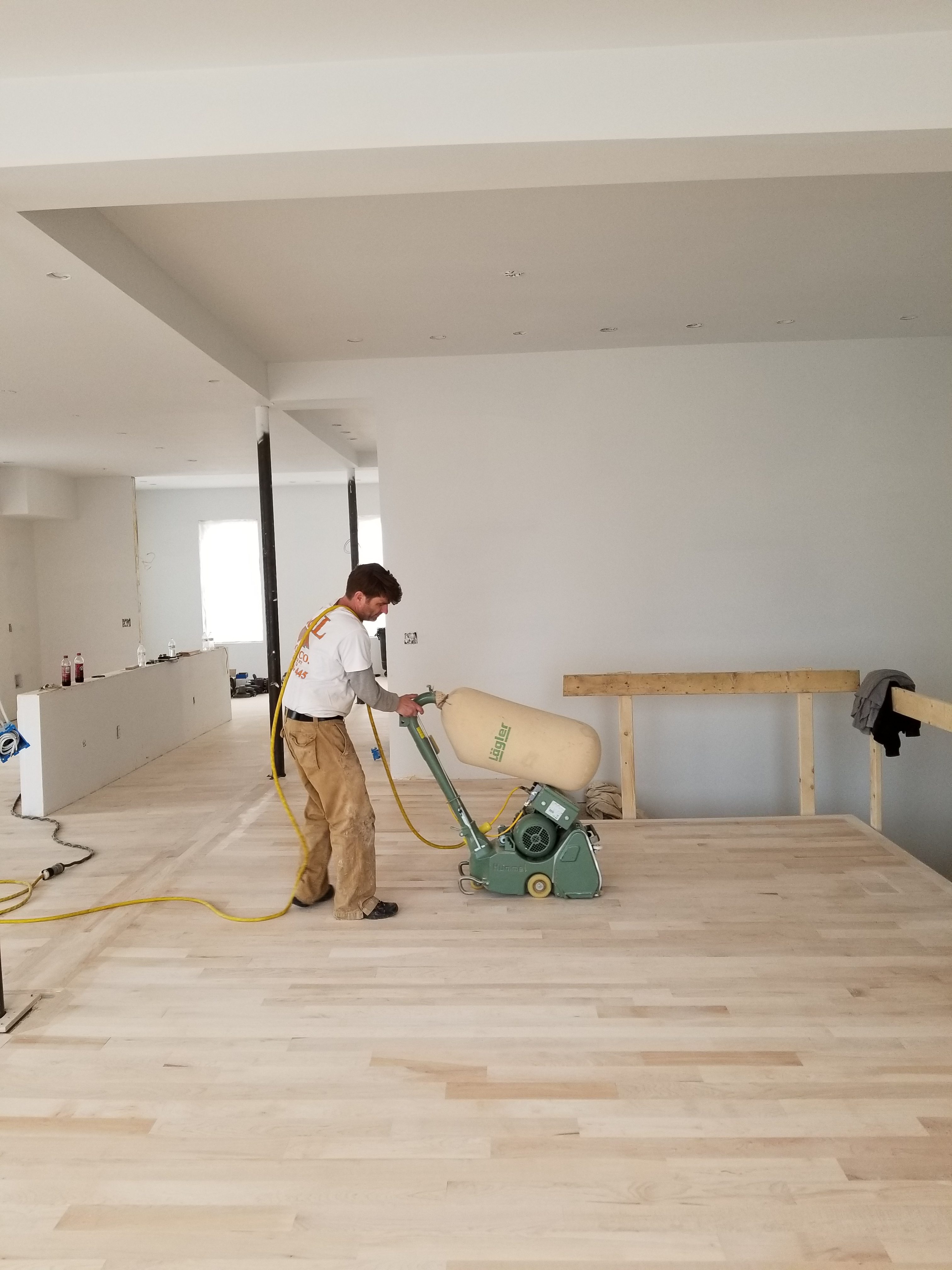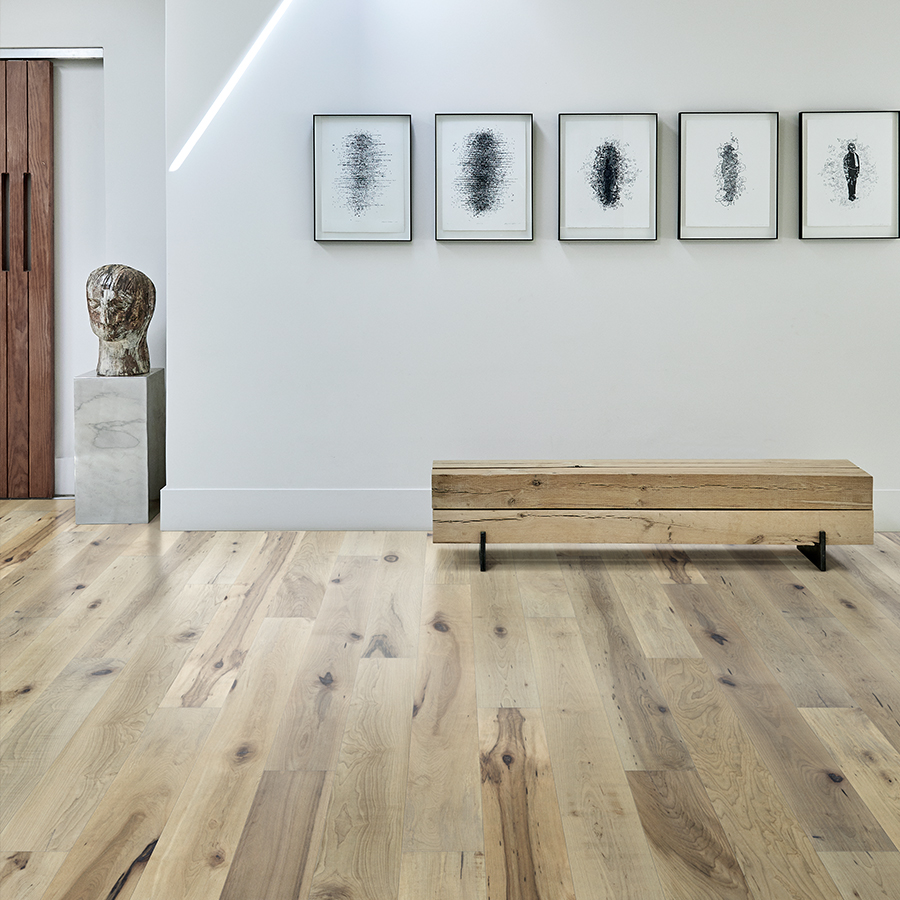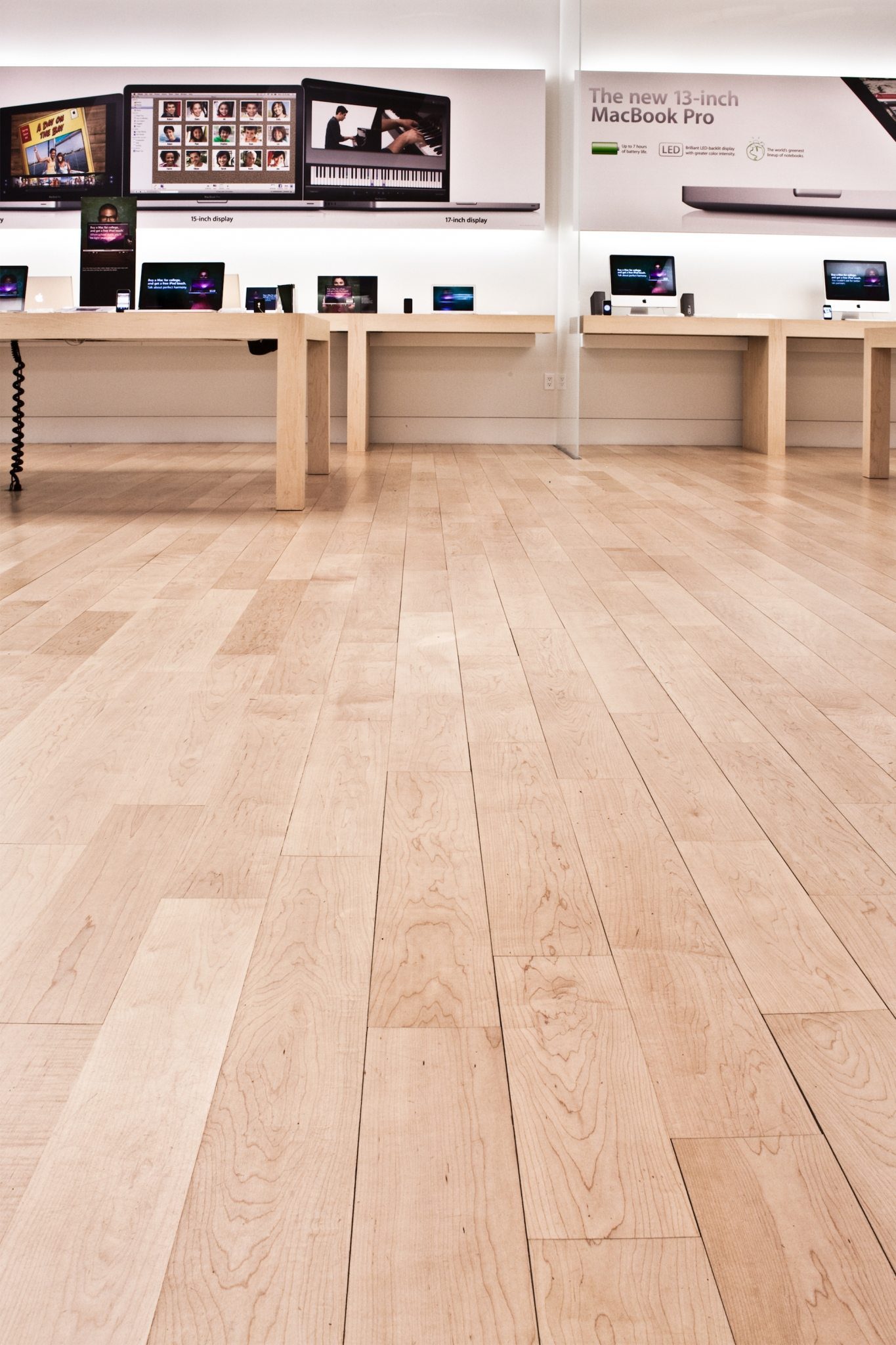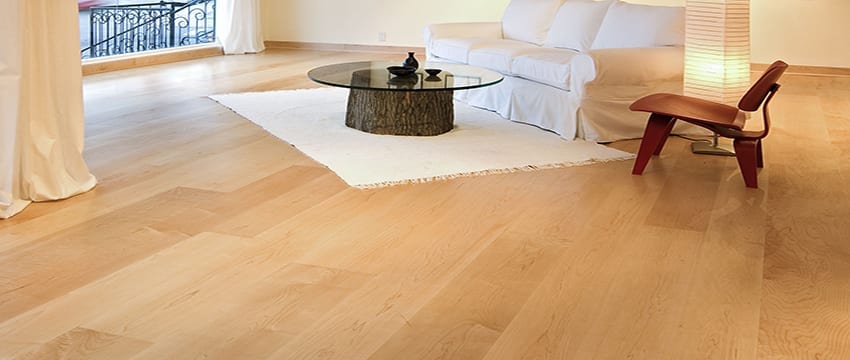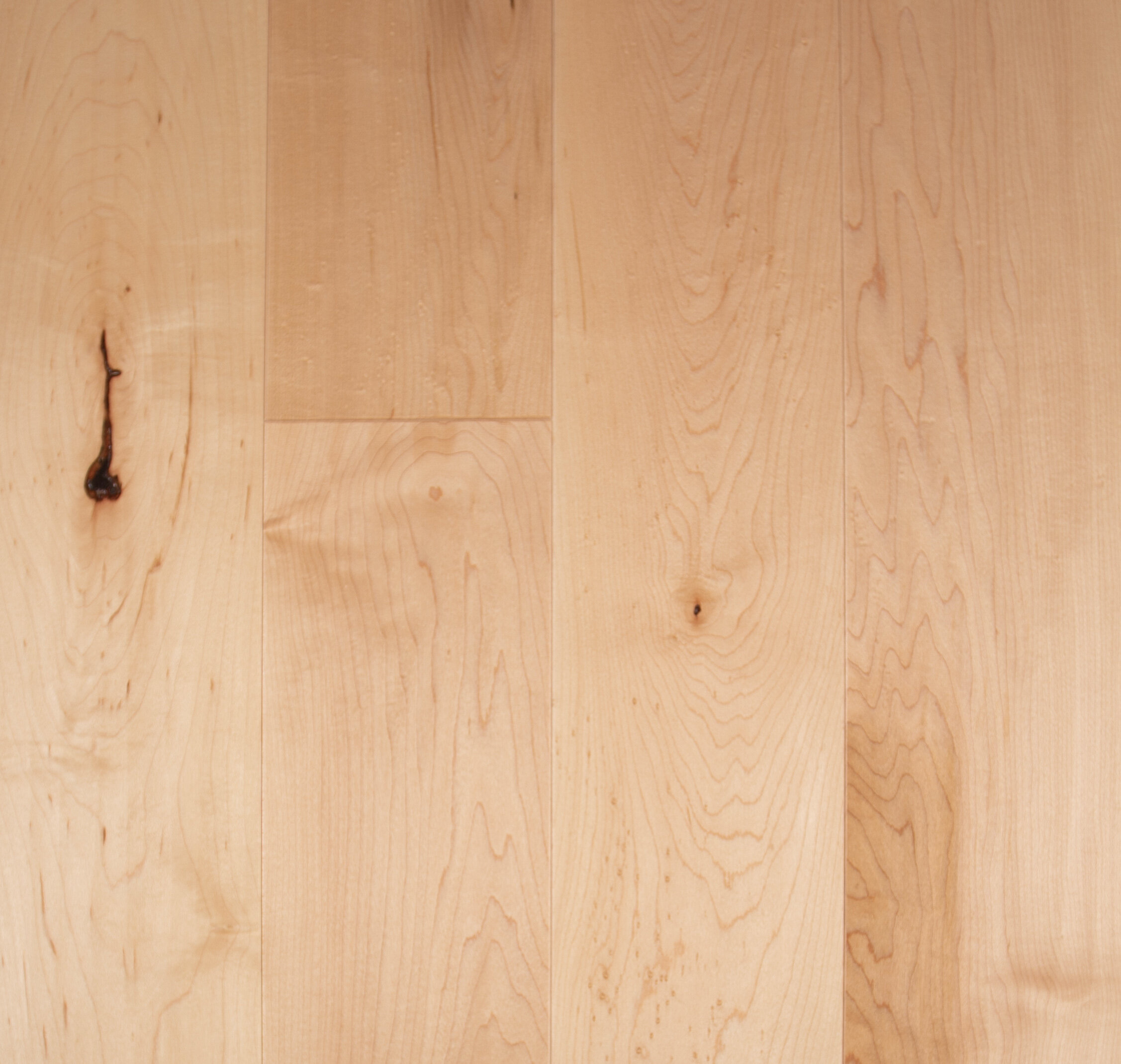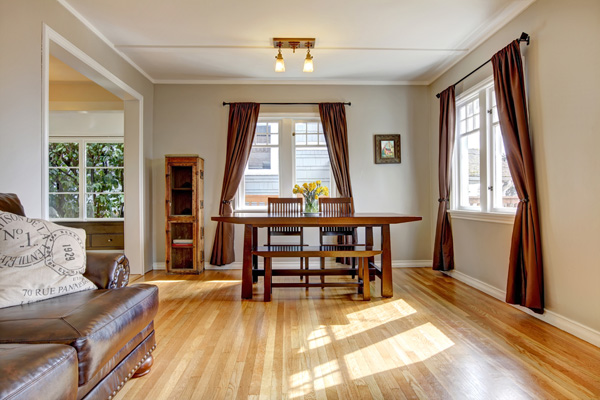Maple hardwood floors are a popular choice for homeowners and interior designers alike. Known for their durability, aesthetic appeal, and versatility, these floors can enhance the beauty and functionality of any space. In this article, we will explore the various aspects of maple hardwood floors, including their benefits, installation process, maintenance tips, and design options. We will also address common mistakes to avoid and answer frequently asked questions to help you make informed decisions about incorporating maple hardwood floors into your home.
Benefits of Maple Hardwood Floors
Durability and Longevity
One of the most significant benefits of maple hardwood floors is their exceptional durability. Maple is a dense and strong wood, making it highly resistant to wear and tear. This characteristic makes it an ideal choice for high-traffic areas in homes, such as living rooms, kitchens, and hallways. With proper care, maple hardwood floors can last for decades, maintaining their structural integrity and aesthetic appeal.
In addition to their natural strength, maple floors are also less prone to denting and scratching compared to other hardwood options. This resilience ensures that your floors will continue to look beautiful even in households with pets and children. Furthermore, maple’s hardness makes it an excellent choice for commercial spaces that experience heavy foot traffic.
Another advantage of maple hardwood floors is their resistance to moisture and humidity. While all wood floors can be affected by extreme changes in humidity levels, maple’s dense grain structure helps it withstand minor fluctuations better than many other types of wood. This characteristic makes maple a suitable option for regions with varying climates.
Aesthetic Appeal
Maple hardwood floors are renowned for their stunning visual appeal. The wood features a fine, consistent grain pattern that gives it a smooth and uniform appearance. This characteristic makes maple a versatile choice that can complement a wide range of interior design styles, from traditional to contemporary.
One of the most attractive features of maple hardwood is its natural color. Maple wood typically ranges from creamy white to light brown, with subtle variations that add depth and character to the flooring. This neutral palette allows maple floors to blend seamlessly with various color schemes and décor elements, making it a versatile option for any room in the house.
In addition to its natural beauty, maple hardwood can be stained in a variety of colors to match specific design preferences. Whether you prefer a light, airy look or a rich, dark finish, maple can be customized to achieve the desired aesthetic. The wood’s fine grain pattern absorbs stains evenly, resulting in a consistent and polished appearance.

Versatility and Customization
Maple hardwood floors offer remarkable versatility, making them suitable for a wide range of applications. Whether you are renovating a single room or an entire house, maple floors can be tailored to meet your specific needs and preferences. This flexibility is one of the reasons why maple is such a popular choice among homeowners and interior designers.
One of the key aspects of maple’s versatility is its ability to be customized through various finishes and treatments. Homeowners can choose from a variety of surface finishes, including matte, satin, and glossy, to achieve the desired look and feel. Additionally, maple hardwood can be distressed or hand-scraped to create a rustic, vintage appearance that adds character and warmth to the space.
Maple’s adaptability also extends to its compatibility with different installation methods. Whether you prefer traditional nail-down installation, glue-down, or floating floors, maple can accommodate each technique. This flexibility makes it easier to install maple hardwood in various settings, including over radiant heating systems or on different subfloor materials.
Furthermore, maple hardwood floors can be used in combination with other materials, such as tile or carpet, to create unique and visually appealing design elements. For example, maple can be used to create intricate border patterns or inlays that add a touch of sophistication and elegance to the flooring design.
Eco-Friendly Choice
In today’s environmentally conscious world, many homeowners are seeking sustainable and eco-friendly building materials. Maple hardwood floors are an excellent choice for those looking to reduce their environmental footprint without compromising on quality or aesthetics.
One of the main reasons maple is considered an eco-friendly option is its renewability. Maple trees grow relatively quickly compared to other hardwood species, making them a more sustainable source of timber. Additionally, responsible forestry practices ensure that maple wood is harvested in a way that minimizes environmental impact and promotes the health and regeneration of forests.
Maple hardwood floors also have a long lifespan, which contributes to their sustainability. The durability and resilience of maple mean that the floors will not need to be replaced as frequently as other flooring options, reducing the demand for new materials and the associated environmental costs. Furthermore, maple wood can be refinished multiple times, extending its life and maintaining its beauty for many years.
Another environmental benefit of maple hardwood floors is their compatibility with low-VOC (volatile organic compound) finishes and adhesives. These products reduce indoor air pollution and contribute to a healthier living environment. By choosing maple hardwood floors finished with eco-friendly products, homeowners can create a safe and sustainable home.
Installation Process
Preparing the Subfloor
The first step in installing maple hardwood floors is to prepare the subfloor. A properly prepared subfloor ensures a stable and even foundation for the hardwood, preventing issues such as uneven surfaces, squeaks, and gaps. The type of subfloor preparation required depends on the existing floor and the installation method chosen.
For plywood or OSB (oriented strand board) subfloors, ensure that the surface is clean, dry, and free of any debris. Any protruding nails or screws should be removed or countersunk to create a smooth surface. If there are any low spots or depressions, they should be filled with a suitable leveling compound to create an even surface.
Concrete subfloors require a different preparation process. Before installing maple hardwood on concrete, it is crucial to test the moisture content of the concrete to ensure it is within acceptable levels. Excess moisture can cause the hardwood to warp or buckle over time. A moisture barrier, such as a polyethylene sheet or a liquid-applied membrane, may be necessary to prevent moisture from reaching the hardwood. Additionally, any cracks or imperfections in the concrete should be repaired to create a smooth and stable surface.
Once the subfloor is properly prepared, an underlayment may be installed to provide additional insulation, moisture protection, and soundproofing. The type of underlayment used depends on the installation method and the specific requirements of the project.
Acclimation of Maple Hardwood
Acclimating the maple hardwood to the environment where it will be installed is a critical step in the installation process. This process allows the wood to adjust to the temperature and humidity levels of the room, reducing the risk of expansion or contraction after installation. Proper acclimation ensures that the maple hardwood will perform well and maintain its stability over time.
To acclimate maple hardwood, bring the unopened boxes of flooring into the room where they will be installed. The boxes should be placed on the subfloor, spaced out to allow air circulation. It is important to keep the room at a consistent temperature and humidity level during the acclimation period. The recommended acclimation period is typically 3 to 7 days, but this can vary depending on the manufacturer’s guidelines and the specific conditions of the room.
During the acclimation period, monitor the moisture content of the wood using a moisture meter. The goal is for the moisture content of the wood to match the moisture content of the subfloor and the room’s environment. Once the wood has acclimated properly, it is ready for installation.
Installation Techniques
There are several methods for installing maple hardwood floors, each with its advantages and considerations. The most common installation techniques include nail-down, glue-down, and floating floors.
The nail-down method involves securing the maple hardwood planks to the subfloor using nails or staples. This method is typically used for solid hardwood floors and requires a wooden subfloor. The planks are nailed at an angle through the tongue of the board, creating a secure and stable floor. This method is known for its durability and longevity.
The glue-down method involves adhering the maple hardwood planks directly to the subfloor using a strong adhesive. This method is suitable for both solid and engineered hardwood floors and can be used on concrete subfloors. The glue-down method provides excellent stability and is often used in areas with high humidity or temperature fluctuations.
The floating floor method involves joining the maple hardwood planks together using a tongue-and-groove system or a click-lock mechanism. The planks are not attached to the subfloor but rather “float” above it. This method is commonly used for engineered hardwood floors and is ideal for DIY installations. Floating floors are versatile and can be installed over various types of subfloors, including existing flooring.
Finishing and Sealing
After the maple hardwood floors are installed, the next step is to finish and seal the wood. This process enhances the wood’s natural beauty, protects it from damage, and ensures its longevity. The type of finish and sealant used will depend on the desired look and the specific requirements of the space.
One of the most common finishes for maple hardwood floors is polyurethane, which is available in both oil-based and water-based formulations. Oil-based polyurethane provides a rich, amber hue that enhances the wood’s natural color and grain pattern. It is known for its durability and resistance to wear and tear. Water-based polyurethane, on the other hand, offers a clear, non-yellowing finish that preserves the wood’s original color. It is also low in VOCs, making it a more environmentally friendly option.
Other finishing options include wax, oil, and penetrating sealers. Wax provides a warm, satin finish that can be easily maintained and refreshed. Oil finishes penetrate the wood, enhancing its natural beauty and providing a low-sheen, matte finish. Penetrating sealers protect the wood from within, offering excellent moisture resistance and durability.
Once the finish is applied, it is important to allow it to dry and cure properly before using the floor. The curing time will vary depending on the type of finish used and the environmental conditions. Properly finished and sealed maple hardwood floors will provide years of beauty and protection.
Maintenance Tips
Regular Cleaning
Maintaining the beauty and longevity of maple hardwood floors requires regular cleaning and care. Routine cleaning helps prevent dirt, dust, and debris from accumulating on the surface, which can cause scratches and dull the finish over time.
To keep your maple hardwood floors clean, start by sweeping or vacuuming them regularly to remove loose dirt and debris. Use a soft-bristle broom or a vacuum with a hardwood floor attachment to avoid scratching the surface. It is important to clean up spills and messes promptly to prevent moisture from penetrating the wood and causing damage.
For deeper cleaning, use a damp mop with a mild, pH-neutral hardwood floor cleaner. Avoid using harsh chemicals, abrasive cleaners, or excessive water, as these can damage the finish and the wood. When mopping, wring out the mop thoroughly to ensure it is only slightly damp, and follow the grain of the wood to avoid streaks and water marks.
Preventing Damage
Preventing damage to your maple hardwood floors is essential for maintaining their appearance and functionality. There are several steps you can take to protect your floors from scratches, dents, and other forms of wear and tear.
One of the simplest ways to protect your maple hardwood floors is to use rugs and mats in high-traffic areas, such as entryways, hallways, and kitchens. These coverings can help trap dirt and moisture, preventing them from reaching the wood surface. Make sure to use rugs with non-slip backings to prevent them from moving and causing scratches.
Furniture can also cause damage to hardwood floors if not properly managed. Place felt pads or furniture coasters under the legs of chairs, tables, and other heavy items to prevent scratches and dents. When moving furniture, lift it rather than dragging it across the floor to avoid gouging the wood.
In households with pets, it is important to keep their nails trimmed to prevent them from scratching the floor. Additionally, using pet-friendly mats or rugs in areas where pets frequently play or rest can help protect the wood surface.
Addressing Wear and Tear
Over time, even well-maintained maple hardwood floors may show signs of wear and tear, such as minor scratches, dullness, or surface blemishes. Addressing these issues promptly can help preserve the floor’s appearance and prevent further damage.
For minor scratches and surface blemishes, touch-up kits or wood markers that match the color of your maple hardwood can be used to conceal the imperfections. These products are available at most hardware or home improvement stores and are easy to apply. For deeper scratches or gouges, wood filler can be used to repair the damage before refinishing the area.
If your maple hardwood floors have become dull or worn, consider buffing and recoating them to restore their original luster. Buffing involves lightly sanding the surface to remove the top layer of the finish, followed by applying a new coat of finish. This process can revitalize the appearance of the floors without the need for a full refinishing.
Refinishing
Refinishing maple hardwood floors is a more extensive maintenance procedure that involves sanding down the surface to remove the existing finish and any imperfections, followed by applying a new finish. This process can restore the floors to their original beauty and extend their lifespan.
The frequency of refinishing depends on the level of wear and tear and the thickness of the hardwood. On average, maple hardwood floors can be refinished every 7 to 10 years, but this can vary based on factors such as foot traffic and maintenance practices.
Refinishing is a complex process that requires specialized equipment and expertise. While some homeowners may choose to undertake this project themselves, hiring a professional flooring contractor is recommended to ensure a high-quality and durable result. A professional will also be able to advise on the best type of finish for your specific needs and preferences.
Design Options
Staining and Color Choices
Maple hardwood floors offer a wide range of staining and color options, allowing homeowners to customize the look of their floors to match their design preferences. While the natural color of maple ranges from creamy white to light brown, staining can enhance or alter this palette to create a variety of aesthetic effects.
One popular option is to apply a clear or light stain that enhances the natural beauty of the wood, highlighting its fine grain and subtle variations in color. This approach preserves the inherent characteristics of maple and creates a timeless, classic look that complements both traditional and modern interiors.
For homeowners seeking a more dramatic effect, darker stains can be applied to create a rich, sophisticated appearance. Dark stains, such as espresso or walnut, add depth and warmth to the floors, making them a focal point in the room. This option is particularly well-suited for formal living spaces, dining rooms, and offices.
In addition to traditional stains, maple hardwood floors can also be finished with contemporary colors, such as gray or whitewash, to achieve a trendy, modern look. These finishes provide a unique twist on classic hardwood floors and can be used to create a sleek, minimalist aesthetic.
Patterns and Layouts
The way maple hardwood floors are installed can significantly impact the overall design and visual appeal of a space. Various patterns and layouts can be used to create distinctive and eye-catching floor designs that add character and style to any room.
One of the most popular patterns is the traditional straight or plank layout, where the maple boards are installed parallel to each other. This classic pattern creates a clean and uniform appearance that works well in both small and large spaces. The straight layout is versatile and can complement a wide range of interior design styles.
For a more intricate and sophisticated look, consider using a herringbone or chevron pattern. These patterns involve arranging the maple boards in a zigzag or V-shaped design, creating a sense of movement and texture on the floor. Herringbone and chevron patterns are often used in formal living spaces, dining rooms, and entryways to add an element of elegance and refinement.
Another option is the parquet pattern, which involves creating geometric designs using small pieces of wood. Parquet patterns can range from simple squares to complex, intricate designs that make a bold statement. This pattern is ideal for adding a touch of luxury and sophistication to any room.
Mixing Materials
Mixing materials with maple hardwood floors can create unique and visually appealing design elements that add interest and personality to a space. Combining different materials allows for creative expression and can help define specific areas within a room.
One way to mix materials is to incorporate tile or stone inlays into the maple hardwood floor. This technique can be used to create decorative borders, medallions, or accents that enhance the overall design. For example, a marble or ceramic tile inlay can add a touch of elegance and contrast to the warm tones of maple wood.
Another approach is to use area rugs to complement and highlight the beauty of the maple hardwood floors. Rugs can add color, texture, and warmth to a room while protecting the wood surface from wear and tear. Choosing rugs with patterns or colors that complement the maple wood can create a cohesive and harmonious design.
Combining maple hardwood with other wood species is also an option for creating unique flooring designs. For instance, using a different wood species for borders or inlays can create a striking contrast and add visual interest. This approach allows homeowners to incorporate multiple wood tones and textures into their flooring design.
Room-Specific Design Considerations
When choosing maple hardwood floors, it is important to consider the specific design requirements of each room. Different rooms have different functions and levels of foot traffic, which can influence the choice of finish, pattern, and layout.
In living rooms and family rooms, where comfort and style are key, a smooth and polished finish can create an inviting and elegant atmosphere. Consider using area rugs to define seating areas and add warmth and texture to the space. The versatility of maple allows it to complement various furniture styles and color schemes.
In kitchens and dining rooms, where spills and moisture are more common, it is important to choose a durable finish that provides excellent moisture resistance. A matte or satin finish can help hide minor scratches and wear, maintaining the floor’s appearance over time. Additionally, using rugs or mats in areas prone to spills, such as near the sink or dining table, can help protect the wood surface.
Bedrooms benefit from the warmth and comfort of maple hardwood floors. Consider using a light stain or natural finish to create a serene and calming environment. Adding soft rugs or runners by the bedside can enhance the cozy feel of the room and provide a comfortable surface for bare feet.
In high-traffic areas such as hallways and entryways, durability and resilience are crucial. Choose a finish that offers excellent scratch and wear resistance, and consider using a straight or herringbone pattern to add visual interest. Placing rugs or mats in entryways can help trap dirt and moisture, protecting the floors from damage.
Common Mistakes to Avoid
Neglecting Proper Acclimation
One common mistake when installing maple hardwood floors is neglecting the acclimation process. Acclimation is essential for allowing the wood to adjust to the temperature and humidity levels of the installation environment. Skipping this step can result in the wood expanding or contracting after installation, leading to gaps, buckling, or other issues.
To avoid this mistake, ensure that the maple hardwood is acclimated for the recommended period, typically 3 to 7 days, before installation. Monitor the moisture content of the wood and the subfloor to ensure they are within acceptable levels. Proper acclimation will help ensure a stable and long-lasting installation.
Using Excessive Water for Cleaning
Using excessive water to clean maple hardwood floors is another common mistake that can cause significant damage. Water can seep into the wood and cause it to swell, warp, or develop mold and mildew. Harsh cleaning chemicals can also damage the finish and the wood.
To avoid this mistake, use a damp mop with a mild, pH-neutral hardwood floor cleaner for regular cleaning. Ensure the mop is thoroughly wrung out so that it is only slightly damp. Avoid using steam mops or soaking the floors with water. Promptly clean up any spills to prevent moisture from penetrating the wood.
Ignoring Environmental Factors
Ignoring environmental factors, such as humidity and temperature levels, can lead to problems with maple hardwood floors. Wood is sensitive to changes in humidity and can expand or contract as a result. Failing to maintain stable environmental conditions can result in gaps, buckling, or cupping of the wood.
To avoid this mistake, use a humidifier or dehumidifier to maintain consistent humidity levels in your home, ideally between 30% and 50%. Avoid exposing the floors to direct sunlight for extended periods, as this can cause the wood to fade or discolor. Using window coverings or UV-protective films can help protect the floors from sun damage.
Improper Installation Techniques
Improper installation techniques can compromise the stability and appearance of maple hardwood floors. Common mistakes include not properly preparing the subfloor, using incorrect fasteners, or failing to leave adequate expansion gaps.
To avoid these mistakes, ensure that the subfloor is clean, dry, and level before installation. Follow the manufacturer’s guidelines for the specific installation method chosen, whether it is nail-down, glue-down, or floating. Leave appropriate expansion gaps around the perimeter of the room to allow for natural movement of the wood. If you are unsure about the installation process, consider hiring a professional to ensure a high-quality and durable result.
Are Maple Hardwood Floors Suitable for High-Traffic Areas?
Yes, maple hardwood floors are suitable for high-traffic areas due to their exceptional durability and resistance to wear and tear. Maple is a dense and strong wood that can withstand heavy foot traffic, making it an ideal choice for areas such as living rooms, kitchens, and hallways. Additionally, maple’s hardness makes it less prone to denting and scratching, ensuring that the floors maintain their appearance over time. With proper care and maintenance, maple hardwood floors can last for decades in high-traffic areas.
How Do I Maintain the Finish of My Maple Hardwood Floors?
Maintaining the finish of maple hardwood floors involves regular cleaning and preventive measures. Sweep or vacuum the floors regularly to remove dirt and debris that can scratch the surface. Use a damp mop with a mild, pH-neutral hardwood floor cleaner for deeper cleaning, and avoid using excessive water or harsh chemicals. Place rugs or mats in high-traffic areas and under furniture to protect the floors from wear and tear. Additionally, use felt pads or furniture coasters under heavy items to prevent scratches and dents. Periodically buffing and recoating the floors can also help maintain the finish and restore their luster.
Can Maple Hardwood Floors Be Refinished?
Yes, maple hardwood floors can be refinished to restore their appearance and extend their lifespan. Refinishing involves sanding down the surface to remove the existing finish and any imperfections, followed by applying a new finish. The frequency of refinishing depends on the level of wear and tear and the thickness of the hardwood. On average, maple hardwood floors can be refinished every 7 to 10 years. Refinishing is a complex process that requires specialized equipment and expertise, so it is recommended to hire a professional flooring contractor to ensure a high-quality result.
What Are the Best Finishes for Maple Hardwood Floors?
The best finishes for maple hardwood floors depend on the desired look and the specific requirements of the space. Polyurethane is one of the most popular finishes, available in both oil-based and water-based formulations. Oil-based polyurethane provides a rich, amber hue and excellent durability, while water-based polyurethane offers a clear, non-yellowing finish and is low in VOCs. Other options include wax, which provides a warm, satin finish, and oil finishes, which enhance the wood’s natural beauty with a low-sheen, matte appearance. Penetrating sealers offer excellent moisture resistance and durability, protecting the wood from within.
How Do I Prevent Scratches on My Maple Hardwood Floors?
To prevent scratches on maple hardwood floors, take several protective measures. Use rugs and mats in high-traffic areas and under furniture to reduce wear and tear. Place felt pads or furniture coasters under the legs of chairs, tables, and other heavy items to prevent scratches and dents. When moving furniture, lift it rather than dragging it across the floor. Keep pets’ nails trimmed to avoid scratching the surface, and use pet-friendly mats or rugs in areas where pets frequently play or rest. Regularly clean the floors to remove dirt and debris that can cause scratches, and avoid using abrasive cleaners or excessive water.
The Pros and Cons of Maple Wood Flooring
Related Posts:
- Using Hardwood Flooring For Stairs
- Hardwood Floor Stain Removal Tips
- Hardwood Floor Installation Cost Vancouver
- Vinyl Tile Hardwood Flooring
- Hardwood Flooring Black Walnut
- Images Of Maple Hardwood Floors
- Finishing Hardwood Floors By Hand
- American Hickory Hardwood Flooring
- Hardwood Floor Cleaner For Scratches
- 5 Inch Walnut Hardwood Flooring

